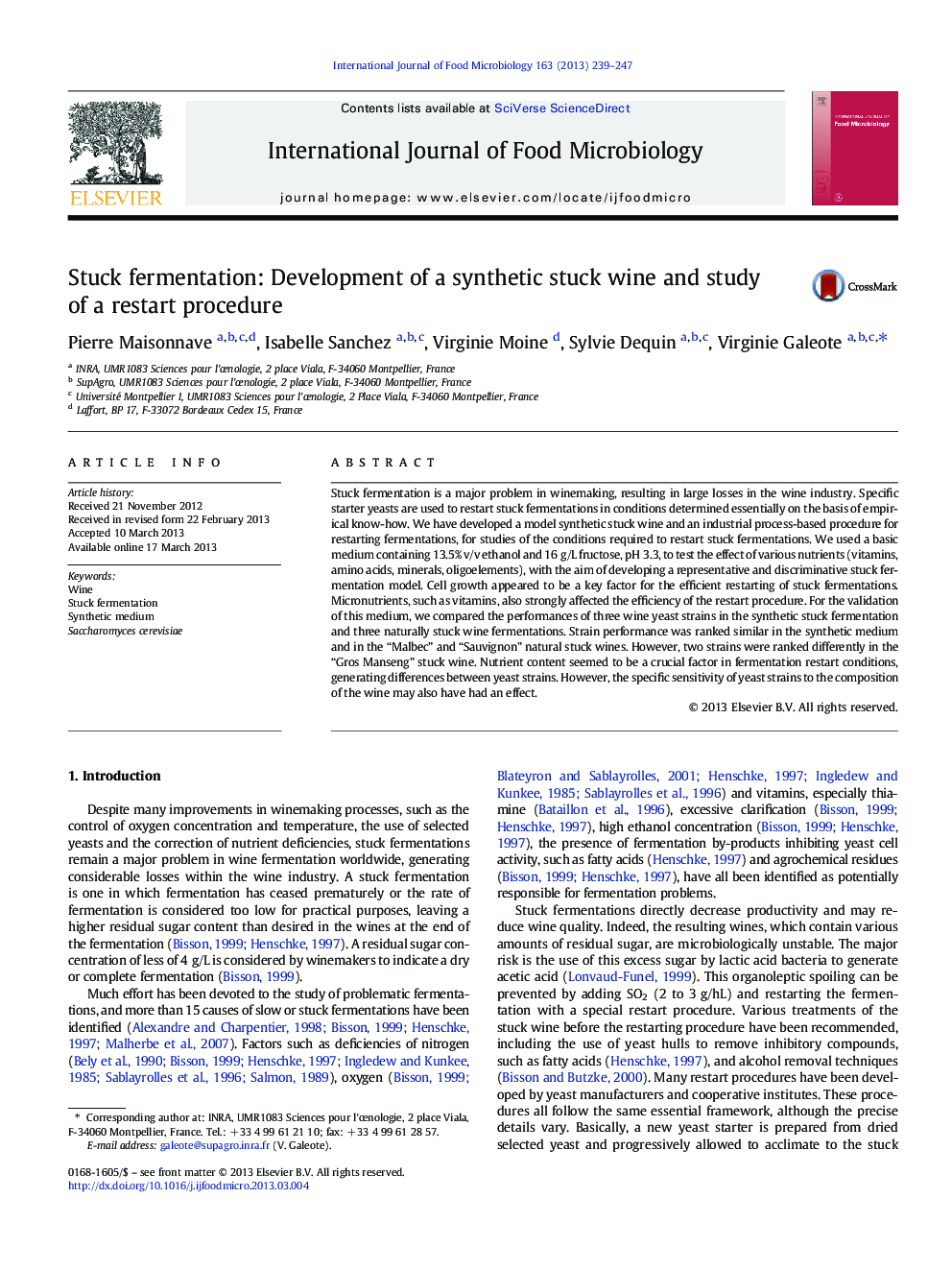| کد مقاله | کد نشریه | سال انتشار | مقاله انگلیسی | نسخه تمام متن |
|---|---|---|---|---|
| 4367171 | 1616625 | 2013 | 9 صفحه PDF | دانلود رایگان |

• We develop a media that mimics stuck wine (SSW).
• We determine the composition of vitamins, amino-acids and minerals in SSW.
• We demonstrate that cells growth is a key factor for restarted stuck fermentation.
• We validated the synthetic stuck wine by comparison with three naturally stuck wines.
Stuck fermentation is a major problem in winemaking, resulting in large losses in the wine industry. Specific starter yeasts are used to restart stuck fermentations in conditions determined essentially on the basis of empirical know-how. We have developed a model synthetic stuck wine and an industrial process-based procedure for restarting fermentations, for studies of the conditions required to restart stuck fermentations. We used a basic medium containing 13.5% v/v ethanol and 16 g/L fructose, pH 3.3, to test the effect of various nutrients (vitamins, amino acids, minerals, oligoelements), with the aim of developing a representative and discriminative stuck fermentation model. Cell growth appeared to be a key factor for the efficient restarting of stuck fermentations. Micronutrients, such as vitamins, also strongly affected the efficiency of the restart procedure. For the validation of this medium, we compared the performances of three wine yeast strains in the synthetic stuck fermentation and three naturally stuck wine fermentations. Strain performance was ranked similar in the synthetic medium and in the “Malbec” and “Sauvignon” natural stuck wines. However, two strains were ranked differently in the “Gros Manseng” stuck wine. Nutrient content seemed to be a crucial factor in fermentation restart conditions, generating differences between yeast strains. However, the specific sensitivity of yeast strains to the composition of the wine may also have had an effect.
Journal: International Journal of Food Microbiology - Volume 163, Issues 2–3, 15 May 2013, Pages 239–247